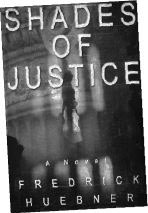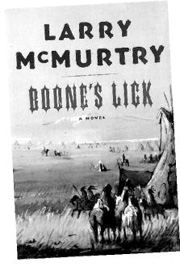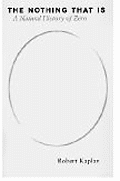Electricity is such a necessary element of modern life that we forget that just a century ago it was still a dubious novelty.
City of Light by Lauren Belfer (The Dial Press, $24.95)
In the 1890s, utopians heralded electricity as “humanity’s modern servant” and believed it would make possible the construction of clean, crime-free, and gargantuan urban centers. Many others, however, feared that electrical current was a public-health hazard and that harnessing the might of rivers to create it would eventually result in scenic lakes and cataracts being sucked dry.
At the center of this debate lay Buffalo, New York, then the eighth-largest city in the US and now the setting for City of Light, first-novelist Lauren Belfer’s tense historical tale of power—both natural and personal. By the turn of the last century, Buffalo had prospered from Great Lakes marine commerce and was confident that its proximity to new hydroelectric projects at Niagara Falls would perpetuate its influence. To celebrate, city fathers hosted a lavish tribute to technology, electrical and otherwise: the 1901 Pan-American Exposition. The fair drew not only advocates of electrical development but also opponents. What burghers didn’t expect was that it would make Buffalo more notorious than famous.
Belfer’s story begins six months before the Pan-Am’s opening, when we meet Louisa Barrett, the 36-year-old headmistress of Buffalo’s exclusive Macaulay School for Girls. Attractive and articulate, yet unmarried, Barrett lives a mostly quiet life of subterfuge. She feigns an intimate relationship with a longtime woman friend in order to move among Buffalo’s male elite without sparking their wives’ jealousy. Her school’s curriculum, while publicly conventional, privately encourages Macaulay girls toward greater social responsibility and what in that era would have been deemed a masculine level of personal ambition. But the most carefully guarded of Barrett’s secrets is the source of her particular interest in Grace Sinclair, her increasingly troubled 9-year-old goddaughter.
Grace’s mother, Barrett’s best friend, has recently perished. The girl’s father is Tom Sinclair, director of the Niagara Falls hydroelectric plant. Although shunned by the local gentility for his poor Irish roots, Sinclair appears to be a kind and generous man. He’s also a dreamer, convinced that his efforts to manufacture energy from the Niagara River will someday empower the masses. While not exactly what Sinclair’s capitalist bosses have in mind, this vision intoxicates Barrett. At least initially.
But then Karl Speyer, a power-plant engineer she had overheard arguing with Sinclair, drowns beneath the ice covering a local lake. And an undercover reporter hints to Barrett that Grace’s father may have gained most from the engineer’s “accident.” By the time a second engineer is swept to his death over the cataract and the lovely daughter of a prominent Buffalo black family is kidnapped, the headmistress realizes she’s caught up in a maelstrom of plots and counterplots, all of which may endanger Tom and Grace Sinclair—and prove that Louisa Barrett is far less in control of her own fate than she’d believed.
Author Belfer spent six years composing City of Light, and that commitment shows. In her hands, historical Buffalo—home to Olmsted-designed parks, looming grain elevators, and an elegant but overcrowded insane asylum—becomes a fully realized presence. Most vividly recreated is the Niagara power station, with its whirling turbines, dangerously churning waters, and carnival-barkerish guides (“Yes, young ladies, feast your eyes on the largest hydroelectric alternators on Earth! Five thousand horsepower each!”). Through Louisa Barrett’s eyes, we see a sophisticated and innovative place where the exploitative 19th century seems but a short leap from the optimistic 20th. However, hopes for the future are hobbled by problems that still plague us 100 years later: labor unrest, unequal treatment of women and minorities, and debate over the proper use of natural resources and technology.
When this yarn falters, it is usually because the author has struggled to make something work. For instance, she contrives City of Light as not only a period piece but also a murder mystery. Yet, out of apparent impatience, she then undermines Barrett’s believability as a sleuth by having her read far too much, far too soon into engineer Speyer’s demise and subsequent suspicious events.
Several real characters spin through these pages, including Theodore Roosevelt and President William McKinley (who will fall to an assassin’s bullet at the Pan-American opening). And Belfer portrays most of them deftly—especially Maria Love, a socialite do-gooder who looks down on immigrants at the same time she seeks to build up their self-esteem. Belfer does less well, though, with Grover Cleveland, once the mayor of Buffalo and later president. Her early recasting of the corpulent Cleveland—who was something of a rake in his youth—as a misogynist and rapist is essential to establishing an aspect of Barrett’s character, even if it stretches credibility. But Belfer doesn’t stop there; she revisits Cleveland in a later scene only to pound home her conviction that men can be cads. Point accepted, already.
Fortunately, City of Light isn’t overwhelmed by these weaknesses. Uncommonly confident for a first novelist, Belfer has crafted a story that rushes along almost as swiftly as the Niagara itself, its tragic end just as anticipated and inevitable as that river’s majestic falls.







